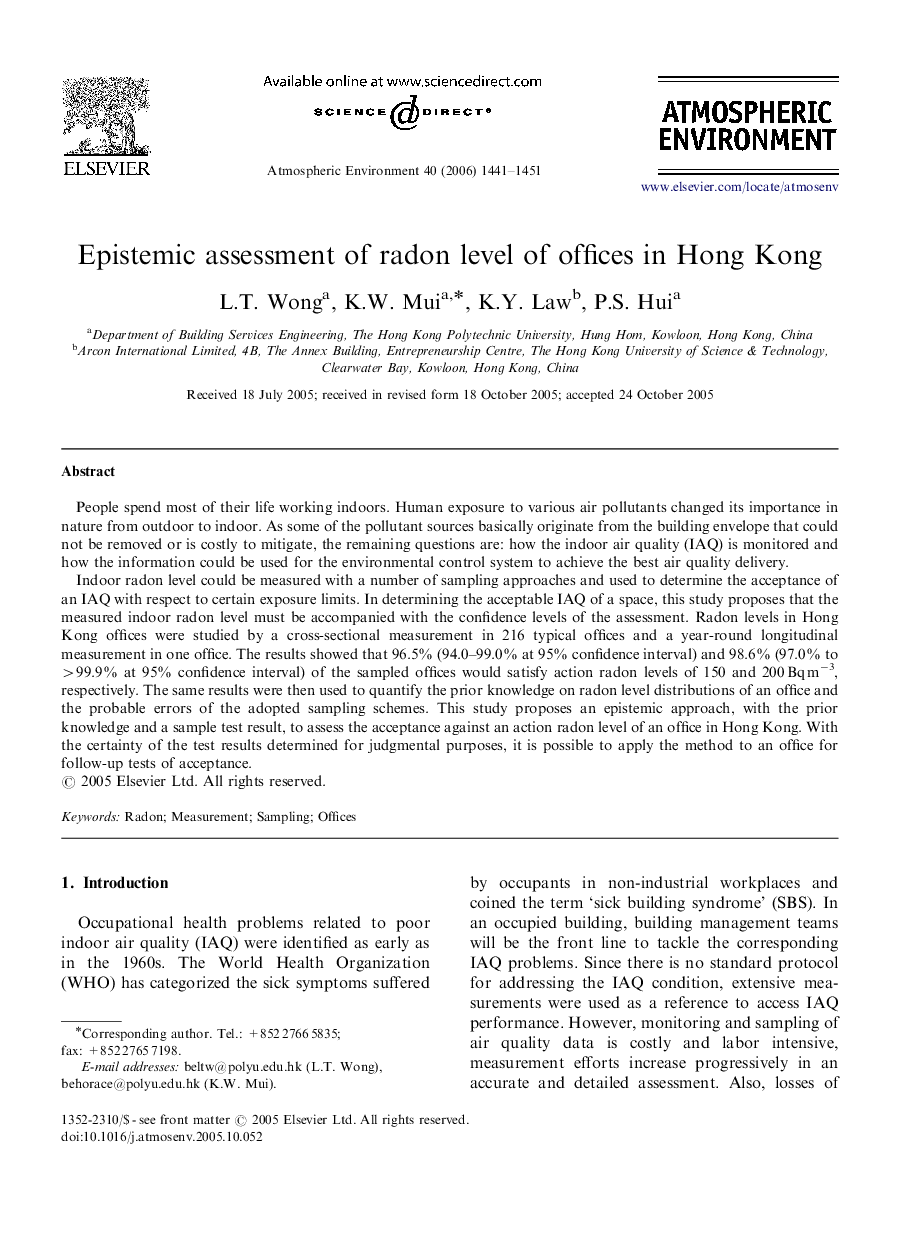| Article ID | Journal | Published Year | Pages | File Type |
|---|---|---|---|---|
| 4444650 | Atmospheric Environment | 2006 | 11 Pages |
People spend most of their life working indoors. Human exposure to various air pollutants changed its importance in nature from outdoor to indoor. As some of the pollutant sources basically originate from the building envelope that could not be removed or is costly to mitigate, the remaining questions are: how the indoor air quality (IAQ) is monitored and how the information could be used for the environmental control system to achieve the best air quality delivery.Indoor radon level could be measured with a number of sampling approaches and used to determine the acceptance of an IAQ with respect to certain exposure limits. In determining the acceptable IAQ of a space, this study proposes that the measured indoor radon level must be accompanied with the confidence levels of the assessment. Radon levels in Hong Kong offices were studied by a cross-sectional measurement in 216 typical offices and a year-round longitudinal measurement in one office. The results showed that 96.5% (94.0–99.0% at 95% confidence interval) and 98.6% (97.0% to >99.9% at 95% confidence interval) of the sampled offices would satisfy action radon levels of 150 and 200 Bq m−3, respectively. The same results were then used to quantify the prior knowledge on radon level distributions of an office and the probable errors of the adopted sampling schemes. This study proposes an epistemic approach, with the prior knowledge and a sample test result, to assess the acceptance against an action radon level of an office in Hong Kong. With the certainty of the test results determined for judgmental purposes, it is possible to apply the method to an office for follow-up tests of acceptance.
